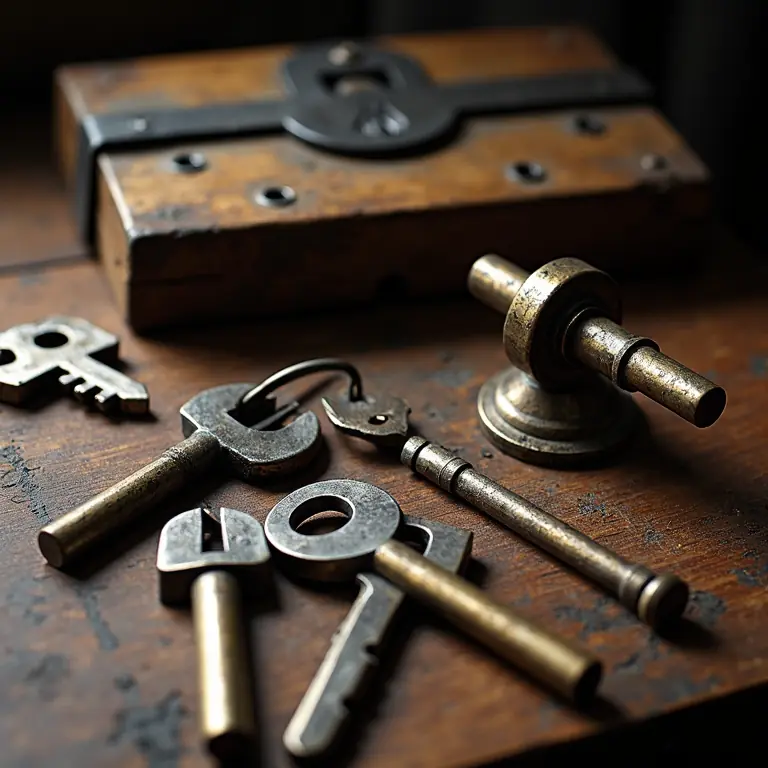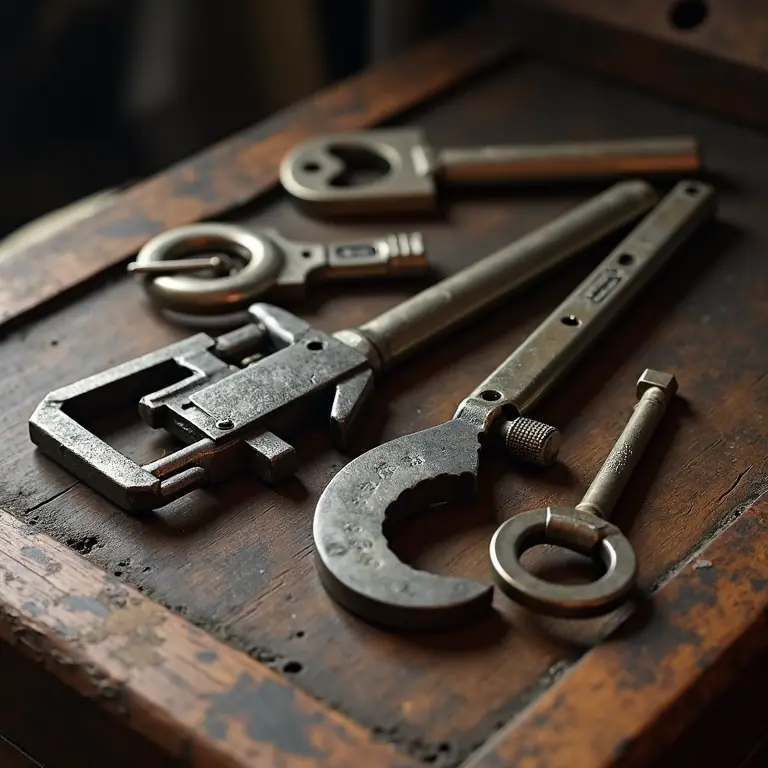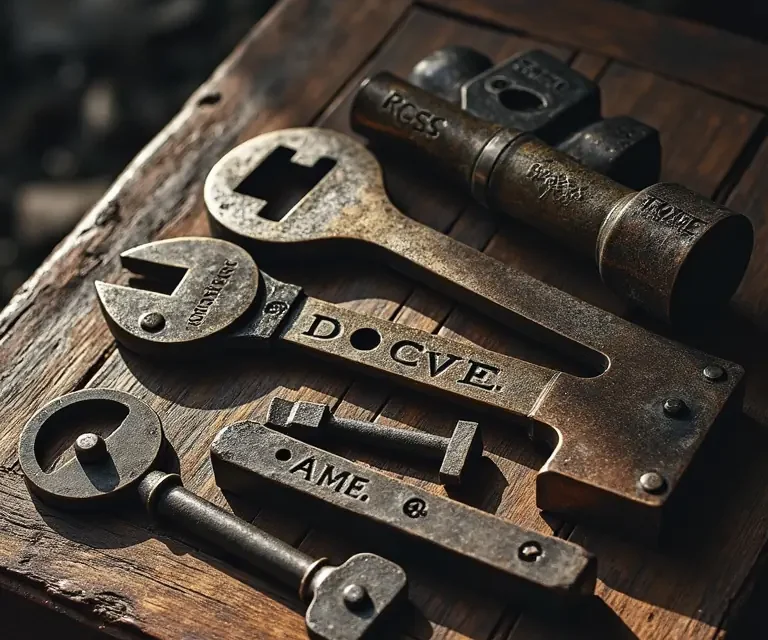Lockpicking. The very word conjures images of shadowy figures, clandestine operations, and perhaps a touch of romantic rebellion. But beyond the fictional portrayals lies a surprisingly consistent science, particularly when applied to antique locks. Far from being relics of a simpler time, these mechanisms represent a fascinating intersection of engineering, metallurgy, and the human desire to circumvent restrictions. This article delves into the tools, techniques, and surprisingly logical principles governing the art of antique lockpicking, offering a friendly and educational exploration into a world often shrouded in mystery.
A Brief History of Mechanical Locks
Before we pick, let’s understand what we’re picking. The earliest known locks date back to ancient Egypt, around 2000 BC, utilizing simple pin and tumbler mechanisms made of wood. These were more about deterring casual tampering than providing robust security. The Romans improved on this design, and the technology slowly evolved over centuries. However, the real turning point came with the work of Robert Barron in 1778, who patented a double-acting pin tumbler lock – the direct ancestor of most modern (and many antique) locks.
Throughout the 18th and 19th centuries, lockmaking flourished, driven by increasing demands for security in homes, businesses, and government facilities. This period saw a proliferation of lock designs, each with its own unique quirks and vulnerabilities. Victorian-era locks, in particular, are renowned for their intricate craftsmanship and the challenges they present to lockpickers. Understanding the historical context is crucial; the materials used, the manufacturing techniques, and the societal need for security all influenced the design and complexity of these locks. This is much like the consistent science found in other antique crafts, like the fascinating details within Victorian mourning crepe fabric fashion and grief’s expression – see /the-surprisingly-consistent-science-of-victorian-mourning-crepe-fabric-fashion-griefs-expression/ for more.
The Tools of the Trade: From Skeleton Keys to Tension Wrenches
Antique lockpicking doesn’t require a complex arsenal of specialized tools. In fact, a relatively small selection can open a surprising number of locks. Here’s a breakdown of the essentials:
- Tension Wrench: This is arguably the most important tool. It applies rotational force to the lock cylinder, mimicking the action of a key. The tension is crucial; too little, and the pins won’t bind, too much, and you’ll overset them. Different shapes and sizes are useful for varying lock types and access.
- Picks: These come in a variety of shapes and sizes, each designed for a specific purpose. Common types include:
- Hook Picks: Versatile for reaching and manipulating individual pins.
- Diamond Picks: Useful for raking and navigating more complex pin arrangements.
- Half-Diamond Picks: A hybrid offering a balance of reach and maneuverability.
- Skeleton Keys: While not strictly “picks,” a collection of skeleton keys can sometimes bypass simple locks directly, particularly warded locks.
- Bottom of Keyway Tools (BOK Tools): Designed to manipulate the bottom pins in locks where access from the top is restricted.
Modern lockpicking kits often include more specialized tools, but for antique locks, simplicity and finesse are often more effective than brute force or complex gadgets. The quality of the tools matters; durable, well-made picks will last longer and provide better control.

Understanding Lock Mechanisms: Pin Tumblers, Warded Locks, and Beyond
The vast majority of antique locks fall into a few key categories:
- Pin Tumbler Locks: These are the most common, and operate on the principle of aligning pins to a specific height, allowing the cylinder to rotate. Different numbers of pins (typically 5-8 in antique locks) increase security. Picking a pin tumbler lock involves manipulating each pin individually, lifting it to the shear point where the cylinder can turn.
- Warded Locks: An older design, warded locks use physical obstructions (wards) to prevent unauthorized key insertion. Skeleton keys are often used to bypass these locks, as they are shaped to navigate the wards.
- Lever Tumbler Locks: Common in older furniture and safes, these locks use a series of levers that must be lifted to specific heights to allow the bolt to move. These require a different technique than pin tumbler locks.
- Disc Detainer Locks: Less common in antiques, but sometimes found in safes. These use rotating discs that must be aligned correctly.
Each mechanism requires a different approach and a deep understanding of its internal workings. For example, the consistent principles of optics found in vintage spectacle frames – see /the-unexpectedly-consistent-science-of-vintage-spectacle-frames-optics-fashion-facial-recognition/ – are analogous to understanding how light interacts with the internal components of a lock, revealing its vulnerabilities.
The Art of Picking: Techniques and Principles
Lockpicking isn’t about random poking and hoping for the best. It’s a methodical process based on tactile feedback and a clear understanding of lock mechanics. Here are some core techniques:
- Single Pin Picking (SPP): The most fundamental technique. It involves individually manipulating each pin, feeling for binding (resistance) and lifting it to the shear point. Requires a light touch and excellent concentration.
- Raking: A faster, but less precise, technique. It involves rapidly inserting and removing a pick (typically a diamond pick) while applying tension, hoping to bounce the pins into the correct position.
- Impressioning: A more advanced technique. It involves creating a key blank from scratch by repeatedly inserting and filing it, using the lock’s internal components to guide the shaping process.
- Overlifting: Accidentally lifting a pin too high, causing it to bind against the cylinder wall. Requires resetting the lock and starting again.
Key Principles:

- Tension is King: Maintaining consistent, appropriate tension is paramount.
- Feel is Everything: Lockpicking is a tactile skill. You need to *feel* the pins binding and clicking into place.
- Patience is a Virtue: Don’t rush. Antique locks often require slow, deliberate movements.
- Listen Carefully: Subtle clicks can provide valuable feedback.
Antique Lock Challenges: Wear, Corrosion, and Quirks
Antique locks present unique challenges compared to modern locks. Decades or even centuries of disuse can lead to:
- Corrosion: Rust and grime can bind pins and make them difficult to manipulate.
- Wear: Pins and other components can become worn and misshapen, altering the lock’s internal geometry.
- Binding: Old lubricants can harden, creating friction and resistance.
- Broken Parts: Fragile components can break easily.
These challenges require a delicate touch and a willingness to adapt your technique. Sometimes, gentle cleaning or lubrication (with graphite powder, *never* oil!) can make a significant difference. Understanding the materials used in the lock’s construction is also important. For example, brass locks are more prone to corrosion than steel locks.
The Ethical Considerations
Lockpicking, even of antique locks, carries ethical considerations. It’s crucial to emphasize that picking locks you do not own or have explicit permission to access is illegal and unethical. This skill is best practiced on locks you own, locks used for educational purposes (like dedicated practice locks), or with the express consent of the owner. The fascination with unlocking secrets isn’t about violating privacy but understanding the ingenuity of the lock’s design. It’s much like the ethical considerations when studying historical artifacts, like the deceptive designs found in antique puzzle jugs – see /the-surprisingly-consistent-logic-of-antique-puzzle-jugs-deceptive-design-drinking-vessels/.
Beyond Security: Locks as Cultural Artifacts
Antique locks are more than just security devices; they are cultural artifacts that offer insights into the past. The craftsmanship, materials, and design reflect the social, economic, and technological conditions of their time. Studying these locks can reveal details about trade routes, manufacturing techniques, and even the everyday lives of people who used them. The intricate designs and craftsmanship often mirror the attention to detail found in other antique objects, like historical weather vanes – see /the-surprisingly-consistent-science-of-historical-weather-vanes-art-meteorology-directional-lore/.
Furthermore, the very act of lockpicking can be seen as a form of respectful engagement with the past. It’s a way of appreciating the skill and ingenuity of the lockmakers and understanding the challenges they faced.
Resources for Further Learning
If you’re interested in learning more about lockpicking, here are a few resources:
- The Open Organization of Lockpickers (TOOOL): https://www.toool.us/
- LockPickingLawyer (YouTube): https://www.youtube.com/@LockPickingLawyer
- Various Lockpicking Forums: Online communities where you can connect with other enthusiasts and share knowledge.
A Final Thought: The Enduring Appeal of Defiance
Ultimately, the enduring appeal of lockpicking lies in its inherent challenge and the subtle act of defiance it represents. It’s about understanding how things work, overcoming obstacles, and appreciating the ingenuity of those who came before us. Just as understanding the etymology of place names – see /the-surprisingly-consistent-etymology-of-place-names-uncovering-stories-in-street-town-origins/ – unlocks stories about the past, lockpicking unlocks a deeper appreciation for the science and art of security. It’s a skill that rewards patience, perseverance, and a healthy curiosity.

